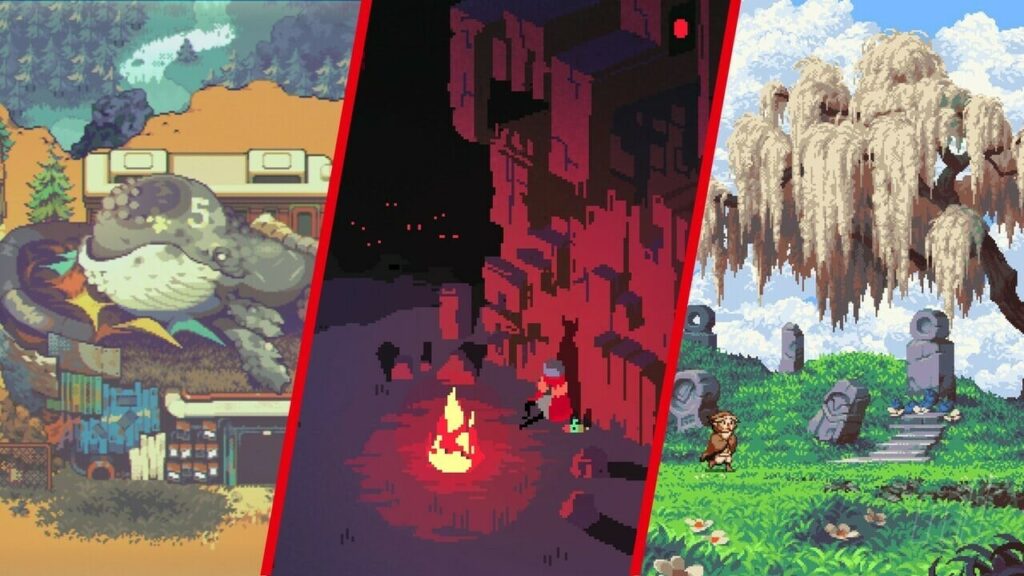The art of game development involves several stages, with one of the most critical being the creation of visually stunning graphics. The process of game art involves concept art, 3D modelling, texturing, animation, and lighting. Advanced techniques like real-time ray tracing, procedural generation, and machine learning are also used to create more visually stunning graphics. Video game graphics have become one of the most critical aspects of gaming, with the power to immerse players in the gaming world and create an emotional connection between the player and the game. As technology advances, more visually stunning games can be expected in the future.
The Art of Gaming: An Inside Look at the Creation of Stunning Visuals
Gaming has come a long way since its inception, and the advances in technology have played a major role in this evolution. From the ever-increasing resolution to the use of intricate and complex graphics, video game visuals have become more stunning and impressive than ever.
The Process Behind Game Development
The game development process is a complex one that involves several stages from conception to delivery. One of the most critical parts of this process involves the creation of visually stunning graphics. The process of designing the graphics and creating a game’s visuals is known as game art.
Game art involves several steps, including:
Concept Art
The first step in the game development process is concept art. Here, the developers work on creating the visual elements that will form the basis of the game. This includes everything from the characters and environments to the weapons and interactive objects. The purpose of this step is to create a visual representation of what the game will look like.
3D Modelling
Once the concept art is set, the designers move on to the 3D modelling stage. Here, they use specialized software to create the 3D models that will be used in the game. The models are created based on the concept art and the specifications laid out by the game designers.
Texturing
Texturing is the next stage in creating video game visuals. Here, designers create the texture maps that are applied to the 3D models. The textures give the models a realistic look by adding color, texture, and detail. Texturing is a time-consuming process since every object in the game needs to be textured separately.
Animation
Animation is a crucial component of any video game. It helps breathe life into the characters and objects in the game. Here, designers use specialized software to create the movements for the characters and objects. These movements are typically created through a series of keyframes that are connected to create a fluid animation.
Lighting
Lighting is the final step in creating visually stunning game graphics. The designers use specialized software to add lighting to the game world. They can adjust the brightness, color, and direction of the light to make the game environment look realistic.
Advanced Techniques Used in Game Art
Game art has come a long way in the past few years, and designers are now using advanced techniques to create even more stunning visuals.
Real-time Ray Tracing
Real-time ray tracing is a new technique that allows game designers to create realistic lighting in real-time. Traditionally, game designers had to use pre-rendered lighting to create a game’s environment. However, with real-time ray tracing, they can add dynamic lighting to the environment, making it more realistic and immersive.
Procedural Generation
Procedural generation is a technique used to create game environments and objects dynamically. Game developers use algorithms to create objects, textures, and environments instead of manually creating them. This allows developers to create vast open-world environments quickly and easily, giving gamers a more immersive gaming experience.
Machine Learning
Machine learning is a technique used to create artificially intelligent game characters. The characters can learn from their interactions and adjust their behavior based on the actions of the player. This technology is being used to create more realistic NPCs in games, making the game world more immersive.
The Importance of Game Art in Gaming
The importance of game art in gaming cannot be overstated. Video game graphics are what sell the game and make it appealing to gamers. Graphics have become one of the most critical aspects of gaming, and game designers are continuously pushing the boundaries to create more stunning visuals.
Furthermore, video game graphics have the power to immerse players in the game world. When the graphics are designed well, gamers become fully invested in the environment, creating an emotional connection with the game.
Conclusion
The creation of visually stunning game graphics is an essential part of game development. Game art involves several stages, including concept art, 3D modelling, texturing, animation, and lighting. Game designers are continuously pushing the boundaries to create more visually stunning graphics using advanced techniques like real-time ray tracing, procedural generation, and machine learning. Video game graphics have the power to immerse players in the game world, creating an emotional connection between the player and the game. As technology advances, we can only expect to see more visually stunning games in the future.
